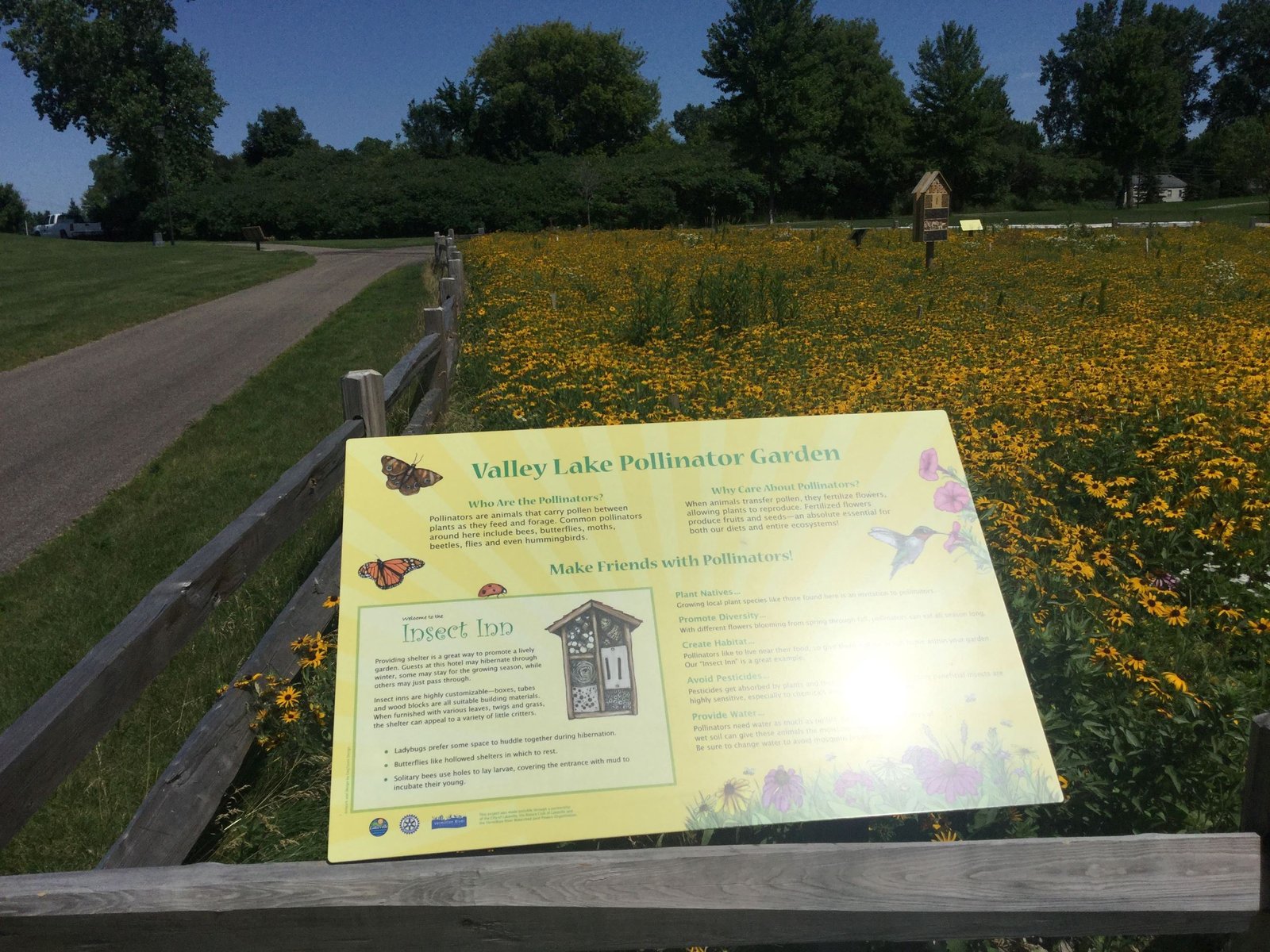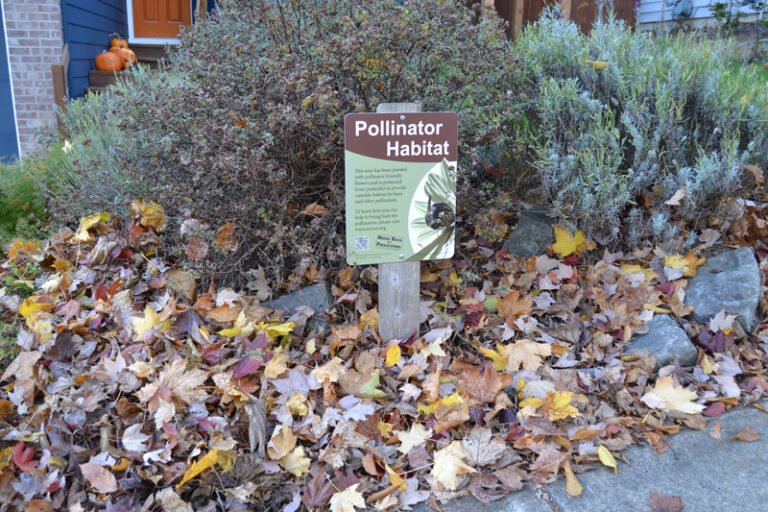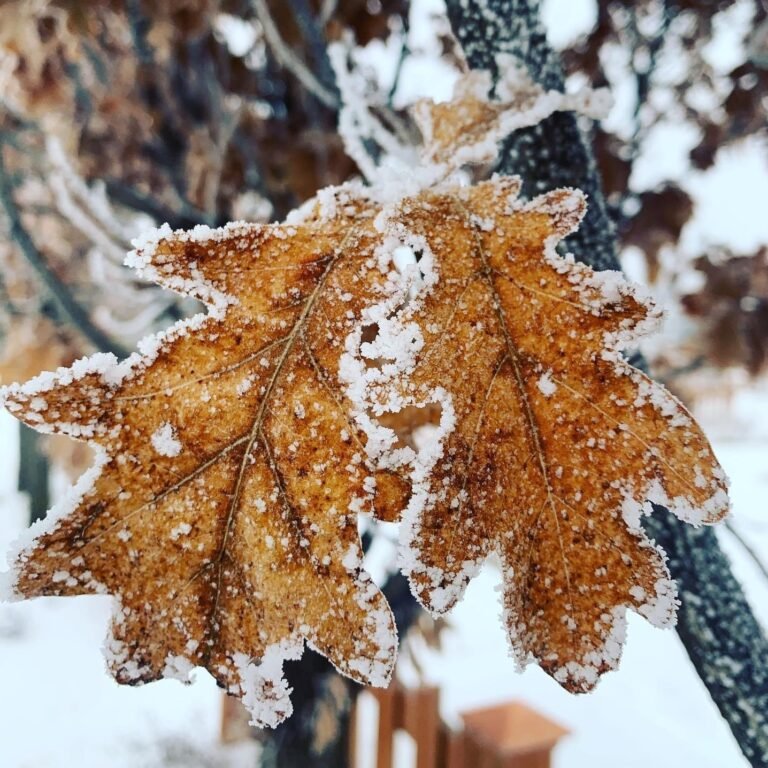Bees and butterflies need protection during cold months. Providing winter shelters can help.
As the leaves fall and temperatures drop, gardeners often think of how to prep their green spaces for winter. Yet, few consider the plight of bees and butterflies seeking refuge from the biting cold. These pollinators are crucial for a healthy ecosystem, and their survival through winter is key to next year’s blooms.
Building shelters for these insects can be a fun, rewarding project that also benefits the environment. This guide will show you easy, effective ways to create havens for bees and butterflies. You’ll learn which materials work best, where to place the shelters, and how to maintain them. By the end of this post, you’ll be ready to give these tiny creatures a warm, safe place to weather the winter months.
Introduction To Winter Habitats
As temperatures drop, bees and butterflies face survival challenges. They need safe winter shelters to weather the cold months. Creating habitats for these pollinators is vital for their preservation. This guide will explain how to build winter shelters that provide safety and warmth for bees and butterflies.
Importance For Bees And Butterflies
Bold, buzzing bees and fluttering butterflies play a crucial role in ecosystems. They pollinate plants, ensuring the growth of crops and wild flora. Winter shelters are key for their survival during harsh conditions. Without them, many would not make it to spring.
Challenges Faced During Winter
Cold weather brings about food scarcity and freezing temperatures for these insects. Their natural habitats often lack the protection needed during winter. Man-made shelters can provide a lifeline. These structures mimic natural havens and offer a safe spot for hibernation.
Understanding Bees’ Winter Needs
As temperatures drop, bees’ survival instincts kick in. They require protection and steady temperatures to thrive through winter. Let’s explore how to support their needs effectively.
Energy Conservation StrategiesEnergy Conservation Strategies
Bees cluster to maintain warmth during cold months. Offering them shelters can significantly aid their energy conservation efforts.
- Provide dry, windproof shelters.
- Ensure shelters face the morning sun.
- Use natural materials for construction.
The Role Of Hive Insulation
Insulation is key to a hive’s warmth. Proper materials can make a big difference.
| Material | Benefits |
|---|---|
| Wood Shavings | Traps heat, easy to find |
| Straw | Good insulation, allows air flow |
Wrap hives with insulation wraps for extra protection. Always check for moisture, as it’s harmful to bees in winter.
Butterflies’ Wintering Behavior
Understanding Butterflies’ Wintering Behavior is key to helping them. As cold weather approaches, these insects look for safe spots to spend the winter. Let’s explore how different species manage this chilly time and what we can do to help.
Species That Overwinter
Not all butterflies face winter the same way. Some fly south, while others stay and find shelter. The Monarch butterfly is famous for its long journey to warmer places. Yet, many stay behind. The Mourning Cloak, Comma, and Question Mark butterflies find hiding spots right here. They look for places like loose bark, fallen leaves, or even your garage to stay warm.
Natural Protection Mechanisms
Butterflies have amazing ways to survive the cold. They use antifreeze proteins to keep their bodies from freezing. Others find safety in numbers, clustering together for warmth. This natural know-how helps them make it through winter until spring brings warmth again.
To help, consider leaving leaf litter in your garden or creating a butterfly shelter. Such simple acts can provide a safe haven for these beautiful creatures during the cold months.
Essential Materials For Diy Shelters
Winter poses a challenge for bees and butterflies. These creatures need warm shelters. Let’s explore the best materials for DIY shelters. They should be eco-friendly and weather-resistant.
Choosing Eco-friendly Insulators
Insulation is key for bee and butterfly shelters. Use natural materials. They keep the cold out and warmth in.
- Straw: Great for insulation.
- Wood chips: They trap air and warmth.
- Dry leaves: Easy to gather and effective.
Durability In Harsh Weather
Materials must withstand snow and rain. Pick items that last all winter.
- Untreated wood: Stands up to elements.
- Thick cardboard: Use in dry spots. It’s a good insulator.
- Recycled plastic: Long-lasting and waterproof.
Designing A Bee Shelter
Bees need safe havens in winter. A well-designed bee shelter provides warmth, protection, and a place to thrive. Let’s explore how to create the perfect winter home for these vital pollinators.
Sizing And Positioning
Size matters for bee shelters. Keep them small and cozy. A shelter should be no larger than a birdhouse. Position it to face the morning sun. This warms the bees early. Place shelters five feet above the ground. Ensure they’re away from harsh winds.
Ventilation And Moisture Control
Bee shelters need good airflow. This prevents mold. Use drilled holes for ventilation. Cover holes with mesh to keep pests out. Add a sloped roof to deflect rain. Inside, use dry materials like wood chips to absorb moisture.
With these guidelines, your bee shelter will be a winter haven for bees.
Creating A Butterfly Haven
Creating a Butterfly Haven is essential for their survival during winter. These beautiful insects need safe spots to rest and hibernate. Let’s explore how to build shelters that protect them through cold months.
Hibernacula Construction
A hibernaculum is a winter shelter for butterflies. Making one is simple. You need:
- Dry leaves
- Twigs
- Grass clippings
Choose a quiet, shaded spot in your garden. Pile the materials loosely. This creates a snug hideaway for butterflies.
Plant Selection For Overwintering
Plants are crucial for butterflies in winter. They provide shelter and food. Focus on these types:
| Plant Type | Benefits |
|---|---|
| Evergreens | Shelter from wind and cold |
| Native Wildflowers | Food in early spring |
| Grasses | Hiding spots |
Plant these near your hibernacula. They make your garden a haven for butterflies.
Maintenance And Upkeep
As the colder months settle in, it’s crucial to ensure the winter shelters for bees and butterflies remain in top condition. Proper maintenance and upkeep protect these vital pollinators against harsh weather. It’s not just about building; it’s about sustaining life through winter’s chill.
Regular Check-ups
Consistent monitoring is key. Every few weeks, inspect shelters for signs of wear or damage. Look for cracks, holes, or water intrusion. Secure any loose parts that may have been jostled by winds or snow. Keep entrances clear so bees and butterflies can enter and exit without obstruction.
- Inspect shelters bi-weekly
- Repair any damage promptly
- Ensure clear entry points
Preparing For Spring Transition
As winter wanes, prepare for a smooth transition into spring. Begin by gradually opening shelters to acclimate inhabitants to warmer temperatures. Clean out any debris that may have accumulated over the colder months. Consider planting native flowers nearby to provide an immediate food source as they emerge.
- Open shelters as temperatures rise
- Clean shelters of winter debris
- Plant nearby native flowers
Legal And Ethical Considerations
Legal and Ethical Considerations are crucial when building shelters for bees and butterflies during winter. These considerations ensure the safety of wildlife and compliance with local laws. Let’s explore the regulations and responsibilities involved in this noble task.
Regulations On Wildlife Protection
Before constructing winter shelters for pollinators, it’s essential to understand wildlife protection laws. Different areas have different rules. It’s best to check with local wildlife agencies. This avoids legal issues and ensures shelters are safe for bees and butterflies.
- Consult local guidelines
- Respect habitat boundaries
- Use safe materials
Promoting Biodiversity Responsibly
Building shelters also means promoting biodiversity. But it must be done responsibly. Choose native plants that support local species. Avoid invasive plants that harm the ecosystem. Always think of long-term impacts on the environment.
- Select native flora
- Avoid invasive species
- Consider ecological balance
Community Engagement And Education
Creating shelters for bees and butterflies is vital during winter. A key part involves Community Engagement and Education. This helps spread knowledge and encourages more people to build shelters. Let’s explore how we can achieve this together.
Organizing Workshops
Workshops are great for teaching and learning. They allow people to learn by doing. Here are steps to organize one:
- Find a location. Schools or community centers work well.
- Gather materials. Ensure you have enough for everyone.
- Advertise. Use local bulletins, social media, and word of mouth.
- Teach. Show how to build shelters step by step.
Workshops not only educate but also bring communities together.
Raising Awareness
To make a bigger impact, we need to raise awareness. Here are effective methods:
- Posters. Place them in high-traffic areas.
- Social Media. Share information and updates online.
- School Programs. Introduce the topic to students.
- Local Media. Newspapers and radio can help spread the word.
Raising awareness helps more people understand why protecting bees and butterflies is important. It encourages them to take action.

Monitoring And Recording Results
Monitoring and Recording Results is crucial in understanding how winter shelters support bees and butterflies. It involves tracking shelter usage and assessing the impact on local populations. Let’s dive into the process of data collection and analysis.
Data Collection
Keeping accurate records is key. Use a simple log to note shelter visits by bees and butterflies. Record the date, time, and species observed. Note weather conditions too. This can show how temperature and weather affect shelter use. Use a table for clarity.
| Date | Time | Species | Weather |
|---|---|---|---|
| January 1 | 12 PM | Honeybee | Sunny |
| January 2 | 10 AM | Monarch Butterfly | Cloudy |
Analyzing Shelter Effectiveness
Review your data monthly. Look for patterns. Are certain shelters more popular? Do weather trends affect usage? Use graphs to spot trends easily. Share findings with local conservation groups. Your data can help others build better shelters.
- Count visits per shelter
- Compare usage across different shelters
- Assess the impact of temperature changes
Remember, the goal is to create safe havens for these creatures during the cold months. Your efforts can make a real difference. Happy monitoring!
Conclusion: The Impact Of Individual Efforts
Conclusion: The Impact of Individual Efforts can make a real difference. Small actions by many people create big changes. You can help bees and butterflies right in your yard. Building winter shelters is a simple way to start.
Encouraging Sustainable Practices
When you build shelters for bees and butterflies, you support nature. You also inspire others. Your garden becomes a safe place for these creatures. Everyone can take part in this eco-friendly activity. Let’s list the benefits:
- Helps pollinators survive cold months
- Improves garden biodiversity
- Reduces pesticide use
- Promotes eco-awareness in communities
Future Prospects For Urban Wildlife
Urban areas can be tough for wildlife. But with effort, cities can support diverse species. Building shelters is a step forward. Gardens become mini refuges. This can lead to:
- More green spaces in cities
- Better urban ecosystems
- Increased wildlife sightings
Your small shelter can spark big changes. It helps urban wildlife thrive. It also brings nature closer to us. Let’s make a difference together!


Frequently Asked Questions
Why Build Winter Shelters For Bees And Butterflies?
Building winter shelters for bees and butterflies provides them a safe haven from harsh weather. It helps in their survival and in maintaining biodiversity. Offering shelter supports their life cycle and pollination activities, which are crucial for a healthy ecosystem and successful gardening.
What Materials Are Needed For Bee And Butterfly Shelters?
For bee and butterfly shelters, you need natural, breathable materials like untreated wood, bamboo, twigs, or pine cones. Avoid using plastics or treated woods. These materials mimic natural hiding spots, ensuring the shelters are safe and inviting for these pollinators.
How To Maintain Shelters For Bees And Butterflies In Winter?
Maintain shelters by placing them in a sheltered, sunny location. Ensure they’re dry and free from snow or leaves blocking the entrances. Checking periodically for damage or pests is crucial. Post-winter, clean the shelters to prepare for the next season, promoting health and longevity of the inhabitants.
Can I Build A Shelter For Both Bees And Butterflies?
Yes, you can build a shelter that accommodates both bees and butterflies. Focus on creating compartments: small holes or tubes for bees, and larger, open spaces filled with bark or leaves for butterflies. Positioning and material choice are key to cater to both species effectively.
Conclusion
Creating winter shelters for bees and butterflies is simple and rewarding. Start today and make a difference in your garden. These small steps help protect vital pollinators. Your efforts support biodiversity and ecosystem health. Remember, even a small shelter can be a haven for these creatures.
Embrace this act of kindness and watch your garden thrive. Let’s give bees and butterflies a fighting chance this winter. Together, we can ensure they greet spring with vigor.



